Alfred E. Kahn, R.I.P.:
A Very Early Wi-Fi Pioneer
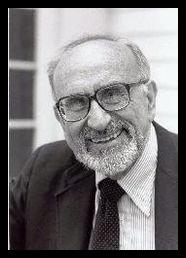
No. Prof. Kahn was the impetus behind Executive Order 12044, “Improving Government Regulations” , which is the real beginning of Wi-Fi and several other contemporary wireless technologies.

Section 4 of the EO had the following requirement:
Review of Existing Regulations.
Agencies shall periodically review their existing regulations to determine whether they are achieving the policy goals of this Order. This review will follow the same procedural steps outlined for the development of new regulations.
In selecting regulations to be reviewed, agencies shall consider such criteria as:
(a) the continued need for the regulation;
(b) the type and number of complaints or suggestions received;
(c) the burdens imposed on those directly or indirectly affected by the regulations;
(d) the need to simplify or clarify language;
(e) the need to eliminate overlapping and duplicative regulations; and
(f) the length of time since the regulation has been evaluated or the degree to which technology, economic conditions or other factors have changed in the area affected by the regulation.
While strictly speaking this did not apply to FCC as an independent agency, FCC Chmn. Ferris undertook to follow these steps.
As my former boss, Steve Lukasik, has written this review started FCC down the path of noting that the ongoing implicit prohibition of spread spectrum technology was anachronistic and then changing it. Subsequent actions cleared the way for Wi-Fi, Bluetooth, and CDMA cellular.
So while Prof. Kahn never made it over to FCC, the snowball he started rolling with EO 12044 had a huge impact on wireless technology and the way we live today.
Extremism on Both Sides of Cell Phone RF Safety Issue
The summary of a recently published letter (not an article) in the International Journal of Epidemiology ends with
Key Points to Appreciate:
* The independently funded Hardell re-analysis study confirms the flaws of the industry-funded Interphone study and confirms that cell phones cause brain tumors.
* No longer can Interphone researchers claim 'error and biases' in their work prevent a 'causal interpretation', thereby diminishing the gravity of the industry-funded study's results that did show risk, and giving pause to public health officials globally.
Note the line: “The independently funded Hardell re-analysis study... confirms that cell phones cause brain tumors.”
Similar information was repeated in the ElectromagneticHealth.org website which stated
In conclusion both studies showed a statistically significantly doubled risk for glioma at the same side as the mobile phone had been used for 1,640 hours or more; Örebro study OR 2.18, Interphone OR 1.96. Similar results were thus obtained in both studies if the same criteria were used in the analysis, that is type of phone (only mobile), cumulative number of hours for use, age group, and anatomical localisation of the brain tumour compared with exposure to microwaves from the mobile phone.
But in considering the reliability of ElectromagneticHealth.org, note that they previously previously stated on its website:
Illness linked to electromagnetic radiation exposure include many cancers, neurological conditions, ADD, sleep disorders, depression, autism, cognitive problems, cardiovascular irregularities, hormone disruption, immune system disorders, metabolism changes, stress, fertility impairment, increased blood brain barrier permeability, mineral disruption, DNA damage and much, much more.
While your blogger is not totally convinced that all cell phone use is safe, he also is dubious about any claim that it is related to so many different pathologies. Nevertheless this is a growing number of people who are concerned, justly or not, about a possible link between cell phone use and illness.
Now let’s look at the other side, CTIA. CTIA does not consider RF safety as one “of the topics that are shaping the industry” or as worthy of a policy paper. However, a search of the CTIA website finds Consumer Info on “Wireless Phones and Health” as well as 2 press releases on its battle with San Francisco on SAR information. The Consumer Info links to the Interphone study -- the design of which Prof. Hadell is questioning above. Then it has the following statement:

The link to the FDA website may have once pointed to that quote, but it does not now. Nor can it be found with the FDA’s search engine. Perhaps, like FCC on SAR, FDA has secretly modified its position. The most explicit statement on cell phone safety I could find on the FDA site was
Under the law, FDA does not review the safety of radiation-emitting consumer products such as cell phones and similar wireless devices before they can be sold, as it does with new drugs or medical devices. However, FDA does have the authority to take action if cell phones are shown to emit radiofrequency energy (RF) at a level that is hazardous to the user. In such a case, FDA could require cell phone manufacturers to notify users of the health hazard and to repair, replace or recall the phones so that the hazard no longer exists.
So instead of saying cellphones are safe, it says FDA could “take action” if they found them “hazardous to the user”. Not quite a positive statement of safety.
Of course, the CTIA site also contains information about their battle with San Francisco including an announcement of their July 23, 2010 filing of a lawsuit against the City of San Francisco for requiring reasonable consumer information on SAR levels of cell phones sold in their city. CTIA states
“The FCC has determined that all wireless phones legally sold in the United States are ‘safe.’ The FCC monitors scientific research on a regular basis, and its standard for RF exposure is based on recommended guidelines adopted by U.S. and international standard-setting bodies. Furthermore, according to the experts at the U.S. Food and Drug Administration (FDA), the available scientific evidence shows no known health risk due to the RF energy emitted by cell phones. As the FDA states on its website, ‘[t]he weight of scientific evidence has not linked cell phones with any health problems.’
CTIA also has information about their boycott of San Francisco as a convention site. So there is information about a lawsuit and a boycott and the statement that “The FCC has determined that all wireless phones legally sold in the United States are ‘safe.’”. No credible information on RF safety or suggestions on how users might want to reduce if they don’t totally trust the federal government. I am not sure what newspapers CTIA leadership reads, but mine indicate that outside the Beltway not everyone trusts the federal government.
Vague government statements about lack of proof that cellphones cause disease may not have universal acceptance in a country where almost 20% of the population think the President is a Muslim.
It is ironic, that with the peaking of cellphone voice minutes last year as reported by FCC, the total RF exposure of the US public may be decreasing since mobiles used in the rapidly expanding texting, video, and web surfing modes result in lower SAR exposure and are actually subject to a higher SAR limit since mostly the hand is exposed. It is also ironic that the growing use of Bluetooth handsfree headsets are also decreasing public exposure. CTIA’s French counterpart, AFOM, is telling the French public about this and providing practical suggestions to decrease exposure - not hiding behind government findings that everything is safe. CTIA seems content with lawsuits and boycotts.
Your blogger feels that both sides are taking irresponsible positions here while we wait for more reasoned analysis and research. FCC’s recent mysterious change of position on SAR is also not helping productive dialogue. Perhaps the new year will bring more reasoned discussion and dialogue on this issue.
NORAD Tracks Santa!
Following an annual tradition begun in 1955, the North American Aerospace Defense Command (NORAD) is tracking Santa’s travels today and through the night. It began as follows:
The tradition began in 1955 after a Colorado Springs-based Sears Roebuck & Co. advertisement for children to call Santa misprinted the telephone number. Instead of reaching Santa, the phone number put kids through to the CONAD Commander-in-Chief’s operations "hotline." The Director of Operations at the time, Colonel Harry Shoup, had his staff check the radar for indications of Santa making his way south from the North Pole. Children who called were given updates on his location, and a tradition was born.
You may be wondering about the spectrum policy connection here. A key part of the software used for Santa tracking was from Analytic Graphics, Inc. (AGI), a spinoff of General Electric (Space Division). AGI’s original product is Satellite Tool Kit (STK), a software product that computes positions for both GSO and NGSO satellites vs. time and has an addon capability of computing all sorts of satellite coverage parameters. When Chmn. Powell started the Excellence in Engineering program at FCC and made increased funding available for engineering tools, I obtained approval to add STK with a multiple user license to the FCC internal user network which previously just had MS Office and WestLaw as the only common tools for the agency. (MATLAB was also added at that time.)
I proposed at that time that all NGSO applicants and licensees be required to submit orbit descriptions in STK format rather than the standard information required by 25.114(c)(6) that requires the geometry of the satellite orbits but not the precise timing with respect to the earth and other satellites. With this precise information it is then possible to analyze precisely sharing opportunities between satellite systems and between satellites and terrestrial systems. I suspect most satellite operators want to do this themselves and don’t want FCC or potential competitors doing it. Well, add that one to the list of unimplemented public spirited proposals.
Meanwhile, get in the holiday spirit and surf on over to NORAD Santa!
Net Neutrality and the 1980 2nd Computer Inquiry Decision

Early in my FCC tenure I was assigned to work with Jim Smith of the Common Carrier Bureau (later with Ameritech, now with AT&T) on the “wordsmithing” of the final text of the decision dealing with the basic/enhanced dichotomy. Jim’s early draft on this issue began with the phrase, “with an air of finality we now decide...”. I pointed out that the 1st computer inquiry foundered because of technological change that had (and possibly could not) been anticipated, and that any definition would risk becoming anachronistic as technology evolved. We were certainly aware of what is now called internet because my boss, Steve Lukasik, was the person who authorized the development of this technology while director of ARPA (now DARPA) and had brought access to FCC when he arrived in 1979. I had been an ARPANET user since 1973 and was included in an early directory that has 2000 addresses for the whole world. So Jim and I worked to make the basic/enhanced definition technology neutral and capable of evolving with anticipated technology - knowing that unanticipated disruptive technology was also likely.
At the top of this post is the basic/enhanced discussion that Jim and I drafted as it was adopted by the Commission - it is linked to the decision’s text. It was an attempt to focus on basic concepts of communications and information theory. Personally, I think that today’s broadband would be a basic service subject to Title II regulation under this 1980 definition. The information I send from my computer is delivered to e-mail recipients and web hosting services in the form that I sent without valued added, computation, or explicit use of information storage. Verizon ships me bits from Netflix, it does not compress video or store it for my later access.
However, a lot of water has gone over the dam since April 1980 and today’s legal definition of the basic/enhanced dichotomy in our common law system is a function of:
- accumulated legislation,
- FCC decisions, and
- court decisions.
In any case, it is certain that Congress and the courts will probably be very busy in the next year in reviewing the net neutrality decision and probably fine tuning it.
Obamacare, Judge Hudson & FCC
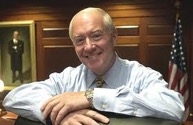
On Labor Day weekend 1987, the Playboy satellite channel’s uplink was jammed by an unknown source for a minute or so with an image containing biblical text. The previous year, after the Captain Midnight HBO satellite jamming incident, Congress had passed 18 USC 1367 criminalizing satellite jamming (but not any other types of jamming). The Playboy incident was the first case after the new law was enacted. The same team that solved the Captain Midnight case in about a week went to work on this case also. George Dillon headed the overall investigation and I handled the technical side. In a little over a week, we verified that the jamming came from Pat Robertson’s Christian Broadcasting Network (CBN) in Virginia Beach, VA and through great detective work and initiative by the late J. J. Freeman, Engineer-in-Charge of the FCC’s Norfolk Office at the time, we had a key piece of CBN’s equipment we could soon match with recordings of the jamming signal and proof that the only person working at the time was one Thomas Haney.
FCC, following normal procedure for criminal violations of laws relating to its jurisdiction referred the case for possible prosecution to the appropriate U. S. Attorney - Henry Hudson in the Eastern District of Virginia. Then ... nothing happened.
We found out that Mr. Hudson had 2 dilemmas: first, he had recently lead Attorney General's Commission on Pornography (“Meese Commission”) and had pressured mainstream media outlets from stocking magazines like Playboy; second, at that time Pat Robertson was a viable candidate for the Republican presidential nomination (later won by Bush 41) and was the darling of the Republican right wing establishment. There was probably fear that prosecution of Haney might uncover wrongdoing by Robertson himself. (In retrospect, there was never any evidence that anyone at CBN other than Mr. Haney had any a priori involvement with the jamming, but there was evidence that after the event CBN managers, not necessarily Mr. Robertson, were involved in a coverup and destruction of evidence.)
It was reported to FCC that Mr. Hudson ultimately met with Attorney General Meese to discuss this relatively obscure case and recused himself from it based on some undisclosed conflict relating to Playboy. Meese let Hudson recuse himself and assigned a career prosecutor from the DOJ Criminal Division to prosecute the case successfully and convict Mr. Haney of a felony. I think the FCC team was ultimately happier with the seasoned pro we got than it would have been dealing with Mr. Hudson’s ambivalent staff. However, Congress had recently passed 18 USC 1367 and Mr. Hudson’s ambivalence to congressional intent always surprised me.
(It is ironic that today CBN’s Washington Bureau is located at ... 1919 M St., NW - the FCC’s former headquarters!)
Perfect Holiday Gift:
New Hedy Lamarr Bios

Avant garde composer George Antheil, a son of German immigrants and neighbor of Lamarr, had experimented with automated control of musical instruments, including his music for Ballet Mecanique, originally written for Fernand Léger's 1924 abstract film. This score involved multiple player pianos playing simultaneously.
Together, Antheil and Lamarr submitted the idea of a secret communication system in June 1941. On August 11, 1942, US Patent 2,292,387 was granted to Antheil and "Hedy Kiesler Markey", Lamarr's married name at the time. This early version of frequency hopping used a piano roll to change between 88 frequencies and was intended to make radio-guided torpedoes harder for enemies to detect or jam.
The idea was not implemented in the USA until 1962, when it was used by U.S. military ships during a blockade of Cuba after the patent had expired. Perhaps owing to this lag in development, the patent was little-known until 1997, when the Electronic Frontier Foundation gave Lamarr an award for this contribution. In 1998, Ottawa wireless technology developer Wi-LAN, Inc. "acquired a 49 percent claim to the patent from Lamarr for an undisclosed amount of stock" Antheil had died in 1959.
Lamarr's and Antheil's frequency-hopping idea serves as a basis for modern spread-spectrum communication technology, such as COFDM used in Wi-Fi network connections and CDMA used in some cordless and wireless telephones. Blackwell, Martin, and Vernam's 1920 patent Secrecy Communication System (1598673) seems to lay the communications groundwork for Kiesler and Antheil's patent which employed the techniques in the autonomous control of torpedoes.
Lamarr wanted to join the National Inventors Council, but she was told that she could better help the war effort by using her celebrity status to sell War Bonds. She once raised $7,000,000 at just one event.
For several years during the 1990s, the boxes of the current CorelDRAW software suites were graced by a large Corel-drawn image of Hedy Lamarr, in tribute to her pre-computer scientific discoveries. These pictures were winners in CorelDRAW's yearly software suite cover design contests. Far from being flattered, however, Lamarr sued Corel for using the image without her permission. Corel countered that she did not own rights to the image. They reached an undisclosed settlement in 1999.
So is she the inventor of spread spectrum? The patent is quite real. But this is like the question of who invented the computer.
The computer developed from a lot of independent origins. Some had long term impact, some were just technological dead ends. I tend to think that her work is more in the latter category. But it is a story that keeps recurring in the press and her personal life story is a fascinating one on both sides of the Atlantic and both sides of WWII.
Who Reads SpectrumTalk?


Once a year we post summary data on who is reading this blog. I actually have more detailed data available, but for the respect of the privacy of users I will not give it. This data was gathered by ClustrMaps.com, a free and reliable service that I would gladly recommend to other webmasters.
I hope that the 18 views from Iran helped inform them about openness and transparency and will lead to a more rational government in that country. We know that the unusual activity in Cayman Islands comes from an individual at its FCC counterpart who finds this blog useful.
Congress Finds Time to Mandate Regulation of TV Commercial Loudness
With the Congress deadlocked on all sorts of major issues and the Republicans threatening to stop all measures during the lame duck session except those related to global budget issues, they still had time to pass HR 1084/S 2847 described in the Senate committee report as follows:
The purpose of the Commercial Advertisement Loudness Mitigation Act, S. 2847, as reported, is to require the Federal Communications Commission (FCC) to incorporate into its rules by reference the standard developed by an industry standards-setting body for moderating the loudness of commercials in comparison to accompanying video programming.
This bill adds a new task to the FCC and provides no additions resources, either staffing or technical equipment budget - both of which are now in short supply. It does not hint how FCC might accomplish this goal at the expense of other goals which already have marginal resources. But the worse thing is that it probably will not even assuage the public who complain about loud TV commercials.
Complaints about loud commercials are long standing issue. Rob Cleveland and I have been reminiscing how this was a big topic when he came to work with me at FCC around 1982. CBS had just finished a large research program led by Bronwyn Jones on quantifying TV loudness with the aim of regulating it. The net result is that you could regulate the apparent loudness of many types of material, but no measurement technique consistently correlated with human perceptions when the program producer was creative. Since advertisers had a perverse incentive to be loud to get people’s attention, they could develop material that fooled the meter. Indeed, Ms. Jones demonstrate commercials to us that were the same sound level by any measure, but because of the nature of the visual content seemed louder.
Now with digital TV, there was a potential for the situation to get even worse. The Advanced Television Standards Committee described the problem:
The new law, assuming it is signed by the President, mandates adoption by FCC of the ATSC ‘‘Recommended Practice: Techniques for Establishing and Maintaining Audio Loudness for Digital Television’’ (A/85). This standard describes how to quantify audio loudness and then give a procedure to sending information to TV receivers to essentially adjust their volume control automatically to maintains a constant loudness. However, when one digs into the details of the standard, the remaining problem becomes clear. The technique used to quantify loudness is basically the same one used in the 1980s CBS system and is shown in the diagram below:Despite the conclusion of the DTV transition, many broadcasters and the production community have been slow to effectively adapt to the changes required to transition from analog NTSC audio techniques to contemporary digital audio practices. With digital television’s expanded aural dynamic range (over 100 dB) comes the opportunity for excessive variation in content when DTV loudness is not managed properly.
Consumers do not expect large changes in audio loudness from program to interstitials and from channel to channel. Inappropriate use of the available wide dynamic range has led to complaints from consumers and the need to keep their remote controls at hand to adjust the volume for their own listening comfort.
The NTSC analog television system uses conventional audio dynamic range processing at various stages of the signal path to manage audio loudness for broadcasts. This practice compensates for limitations in the dynamic range of analog equipment and controls the various loudness levels of audio received from suppliers. It also helps smooth the loudness of program-to- interstitial transitions. Though simple and effective, this practice permanently reduces dynamic range and changes the audio before it reaches the audience. It modifies the characteristics of the original sound, altering it from what the program provider intended, to fit within the limitations of the analog system.

Advertisers who want to be obnoxious and have loud attention getting commercials will structure their audio and video to fool the above measurement. The main effect of this new mandate may be that things just don’t get worse with the increased dynamic range of DTV.
The black boxes need for this are estimated by CBO to cost “from a few thousand dollars to about $20,000 per device”. TV stations will need 1-3 of these devices depending if they are transmitting secondary video streams. (If the market is big enough, custom ICs for this function could lower these costs significantly. But the potential market appears rather small.) The major impact, never mentioned in the Committee report or legislation, will be on small cable systems, who are also covered under this bill and will need a device for each channel that they either originate or insert advertising into. (Cable systems routinely insert advertising into many basic tier cable-only channels such as ESPN.)
So this well intentioned idea will tie up scarce FCC resources that could better be spent stimulating economic growth and will not accomplish its intended purpose. Other than that, it’s a good idea.
UPDATE
Clearly others do not share my skepticism on this piece of legislation:
Chmn. Genachowski:
“The CALM Act, a pro-consumer measure signed into law yesterday by President Obama, will help lower the volume on TV commercials. I commend the bill’s main sponsors, Representative Anna Eshoo and Senator Sheldon Whitehouse, for proposing the legislation, and thank the House Energy and Commerce Committee and Senate Commerce Committee for their leadership. The FCC will now focus on implementing the law to give consumers back the volume control on their TVs.”
Comm. Copps:
“During my tenure at the FCC, I have received literally hundreds of complaints about excessively loud TV commercials. Like millions of American viewers, I have had to suffer through this annoying practice, too. For years the best advice we could give aggravated TV viewers was to find the mute button! So I couldn’t be more pleased that President Obama has signed the Commercial Advertisement Loudness Mitigation Act (CALM Act) into law. I especially want to commend Representative Anna Eshoo and Senator Sheldon Whitehouse for introducing the legislation and for championing this common-sense measure through to final passage. This is a statute that clearly serves the public interest.”
MM-Wave Comms: A $500 million market within 5 years?
=========
In just the last month, we have had two analysts give bold forecasts for the
60 GHz, 70/80 GHz and even 90 GHz millimeter-wave markets. Are these
predictions justified, or are they just (backhaul) pipe dreams?
Analyst's forecast $500+ million millimeter-wave market
In early November, Visant Strategies forecast that revenue from 60 GHz and
70/80 GHz PTP radios will reach over $500 million in 2016, with growth in
the 70/80 GHz space driven by mobile backhaul. Visant says that HSPA+,
WiMAX and LTE base stations and aggregation points will be requiring Gbps
speeds in dense urban areas, growing the mm-wave market five-fold over the
next six years. 60 GHz radio shipments will also grow at the same rate, but
driven by private enterprise and government networks, particularly public
safety wireless networks.
Just a week later, Infonetics Research released a more bullish prediction -
70/80 GHz and 90 GHz PTP equipment will grow to over $450 million by 2014.
Similarly, Infonetics also sees growth from mobile backhaul applications, as
4G network deployments drive demand for higher data capacities in higher
cell density metro areas. Interestingly, Infonetics also sees a role for 90
GHz "W-band" equipment, which is surprising since this is a severely
restricted and difficult to use band.
Is a half-billion dollar market realistic?
Definitely! But a number of factors need to happen for the current mm-wave
comms market of less than $50 million to grow ten-fold within 5 years - a) a
second anchor tenant after Clearwire needs to emerge and adopt this
technology, b) equipment vendors will need to embrace the ETSI / CEPT rules
and bandplans, and c) ongoing product innovation will be needed to ensure
millimeter-wave equipment offers compelling value beyond just high data
rates.
With the microwave PTP backhaul market at over $5 billion, and just about
all top microwave vendors announcing partnerships or interest in
millimeter-wave backhaul products, it is clear that with the right
opportunities and drivers, a future $500 million market is quite feasible.
FCC Issues 3 Bold Spectrum Notices

At its Nov. 30 meeting, FCC adopted 3 bold notices which reverse many years of inaction and apparent 8th floor disinterest in spectrum policy.
The NPRM in ET Docket No. 10-235 “take(s) preliminary steps to enable the repurposing of a portion of the UHF and VHF frequency bands that are currently used by the broadcast television service, which in later actions we expect to make available for flexible use by fixed and mobile wireless communications services, including mobile broadband.”
MSTV has made no public statement yet, but NAB President and CEO Gordon Smith said:
"NAB has no quarrel with incentive auctions that are truly voluntary. Going forward, we believe policymakers have an obligation to maintain digital TV services currently provided by broadcasters and to allow free TV viewers to benefit from DTV video innovations.
"NAB will oppose government-mandated signal strength degradations or limitations, and new spectrum taxes that threaten the future of free and local broadcasting."
CTIA’s Steve Largent said
“We applaud the FCC for opening a proceeding to explore options for freeing up valuable spectrum in the broadcast TV bands for mobile broadband services. Today’s action is another important step to ensuring that we can meet America’s growing demand for mobile Internet access at anytime and anywhere.”
The ET Docket No. 10-237 NOI looks at how to encourage dynamic spectrum access, nee cognitive radio. It raises a whole laundry list of questions including: Interference Suppression, Propagation Models and other Technical Considerations, Policy Radios, Certification, Authorization, Compliance, and Enforcement. To many of us, these are quite familiar issues. But the real problem in encouraging DSA is speedier decision making at FCC. The endless saga of Docket 04-186 with its 6 years to resolution(?) and no products yet approved or even capable of being approved is a huge disincentive to capital formation for DSA research or possibly any innovative wireless technology.
Finally, the ET Docket No. 10-236 NPRM deals with Part 5 experimental licenses. It includes proposals to:
(1) create new opportunities for universities and researchers to use a wide variety of radio frequencies for experimentation under a broad research license that eliminates the need to obtain prior authorization before conducting individual experiments;
(2) empower researchers to conduct tests in specified geographic locations with pre-authorized boundary conditions through the creation of new “innovation zones”;
(3) promote advancement in the development of medical radio devices by creating a medical experimental authorization that would be available to qualified hospitals, Veterans Administration (VA) facilities, and other medical institutions;
(4) broaden opportunities for market trials by revising and consolidating our rules;
(5) promote greater overall experimentation by consolidating and streamlining our existing rules and procedures; and
(6) open new opportunities for experimentation by making targeted modifications to our rules and procedures.
Some observations: The feature proposed in (1) has already been in effect for certain large industrial R&D labs but without any transparency. Codifying such provisions is a good move to implement better transparency.
The VA provisions in (3) are puzzling as the Commission acknowledges in para. 50 with respect to the FCC/NTIA dichotomy.
(4) has been in the rules for a long time, but in practice has been problematical due to abuse and the general disinterest in Title III enforcement on the 8th floor. Thus there has been a real fear at the staff level to allowing marketing trials. Hopefully more explicit rules here will improve things.
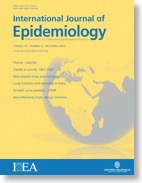


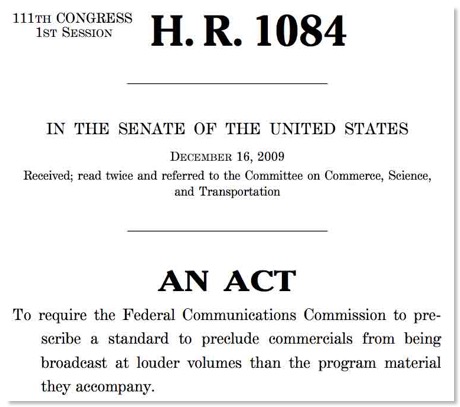
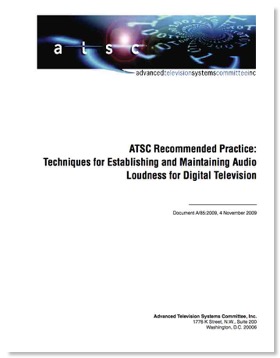


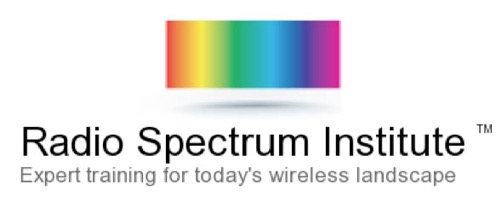


![Validate my RSS feed [Valid RSS]](valid-rss-rogers.png)

